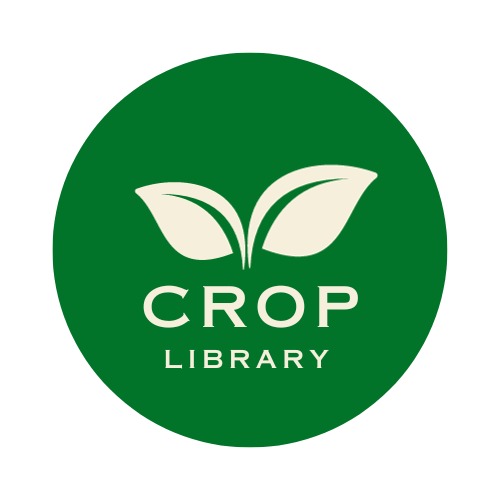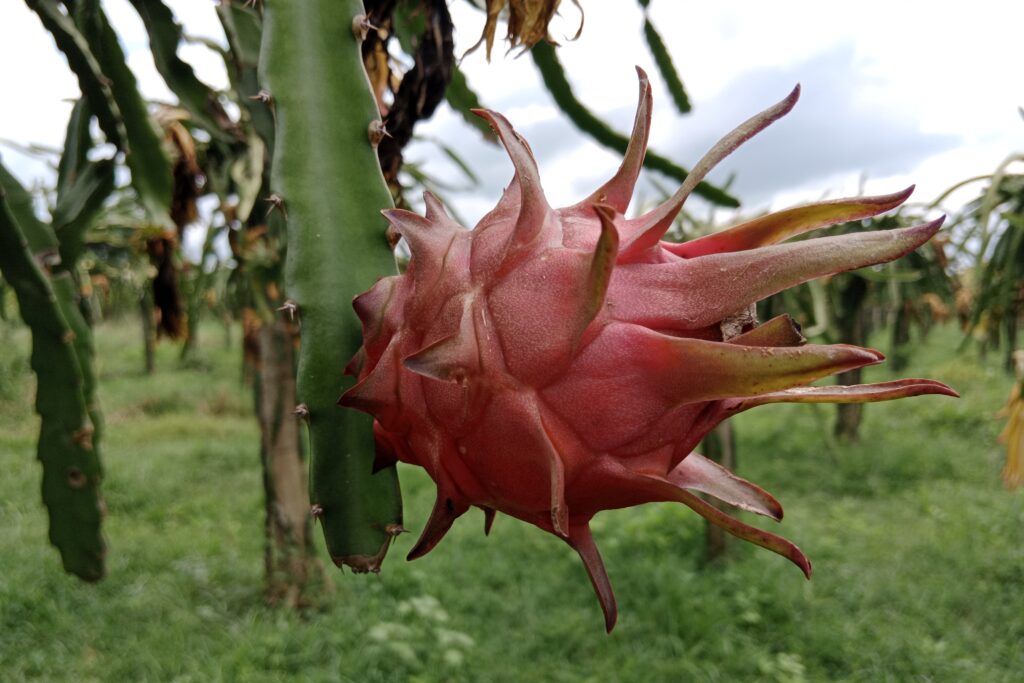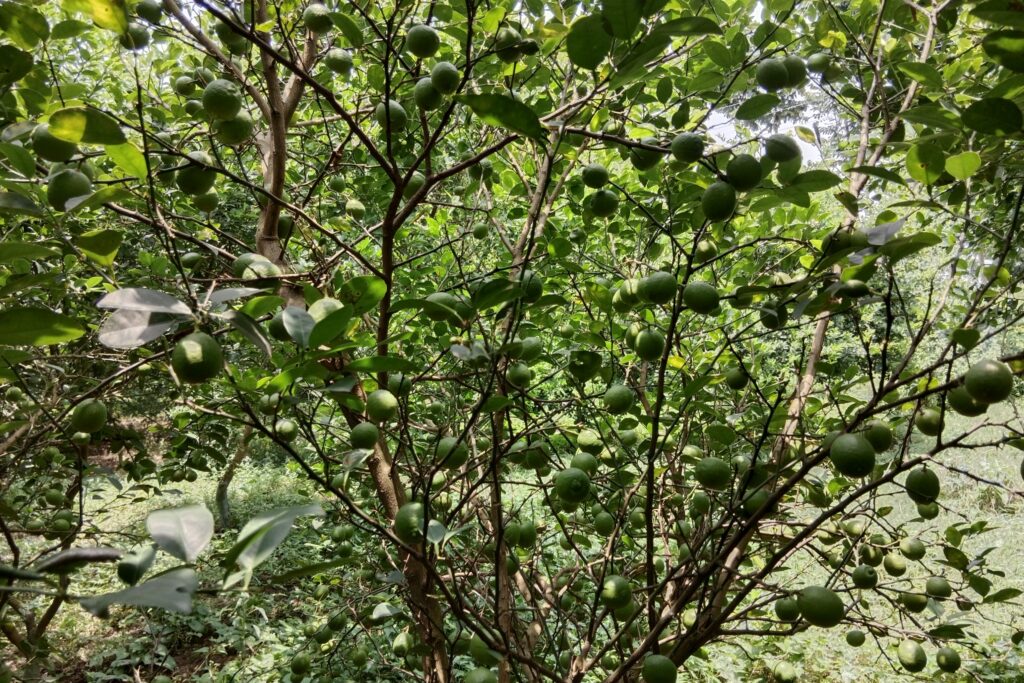Persimmon Farming
Persimmon is a nutritious fruit admired for its pleasant sweetness and health-promoting properties. It contains essential vitamins, dietary fiber, and antioxidants that contribute to overall well-being. The tree grows well in regions with mild to warm climates, particularly in temperate and subtropical zones. Successful cultivation requires careful management throughout each stage of growth to ensure healthy development and high yields.
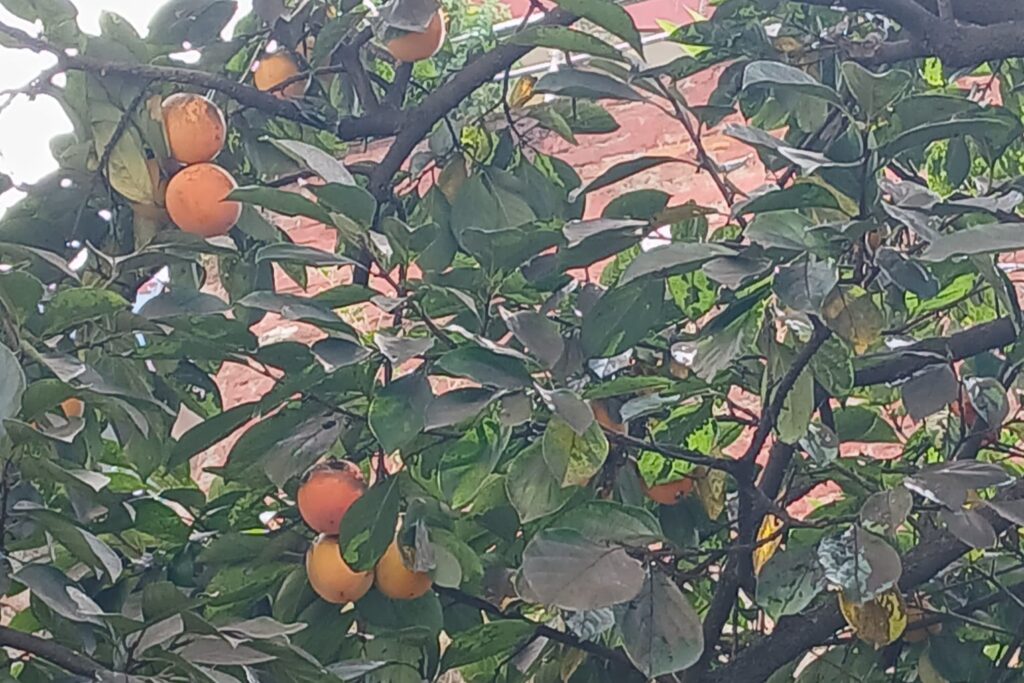
Persimmon farming profit per acre has the potential to be highly lucrative, although establishing a persimmon orchard requires an initial investment of NRs 183,200, mainly due to the cost of drip irrigation. Farmers should be prepared for negative cash flow during the initial years, with cumulative losses exceeding NRs 376,200 by the end of the 3rd year.
However, the payback period is achieved by the 5th year, which is considered excellent for a perennial fruit crop, and once the orchard begins full production, profitability increases significantly. From the 6th to 10th year, the annual net profit stabilizes at approximately NRs 476,250, rising further to NRs 699,000 during the peak production phase between the 11th and 20th year, and maintaining a strong return of NRs 550,000 annually in the 21st to 30th year.
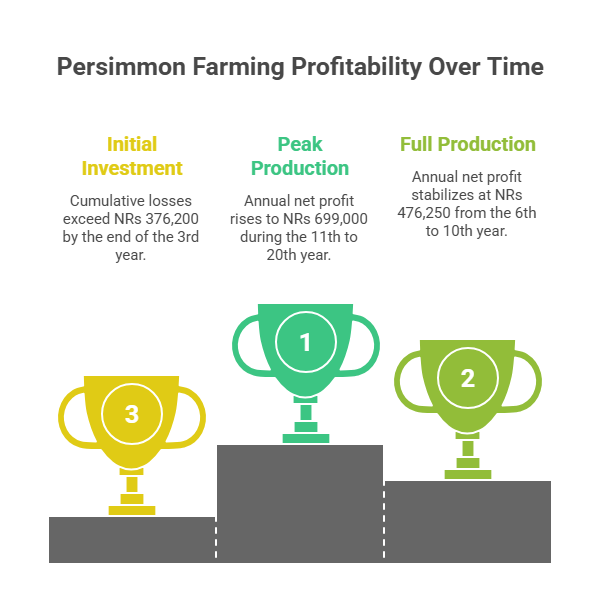
Despite the early financial strain, the long-term return on investment is highly rewarding, generating over NRs 2.23 million in net profit by the 10th year alone and several million rupees over a 30-year period, making persimmon farming a profitable and sustainable venture for long-term investors.
Land Preparation
Land preparation for persimmon cultivation focuses on creating a deep, well-drained, and weed-free seedbed to support healthy root development of young trees. The process begins with thorough clearing of the area by removing all existing vegetation, including trees, stumps, and perennial weeds.
This is followed by deep plowing up to 2–3 feet (60–90 cm) to break hardpan layers and facilitate deep root penetration. After plowing, repeated harrowing is done to break down soil clods and achieve a fine tilth suitable for planting. Finally, the field is properly leveled to ensure uniform water distribution and to prevent waterlogging in low spots, creating ideal conditions for persimmon orchard establishment.
Soil Type
Persimmon trees thrive best in deep, fertile soils that allow water to drain freely, as they are highly susceptible to root diseases when exposed to excessive moisture. A soil pH that is slightly acidic to neutral, generally between 6.0 and 7.5, is considered optimal for their growth. Although the trees can tolerate different soil textures, such as sandy or clay loam, ensuring adequate drainage is crucial because compact, poorly drained clay soils can impede their development and reduce productivity.
Climatic Requirements
Persimmons grow best in temperate to subtropical climates, where they can tolerate winter temperatures as low as -12°C to -15°C during dormancy, though late spring frosts may harm new growth and flowers, and extreme summer heat above 38°C can lead to fruit sunburn. Most cultivars need 100 to 400 chilling hours below 7°C in winter to break dormancy and promote uniform budbreak and flowering. An annual, well-distributed rainfall of 100–150 cm is ideal, and dry weather before harvest helps improve fruit quality.
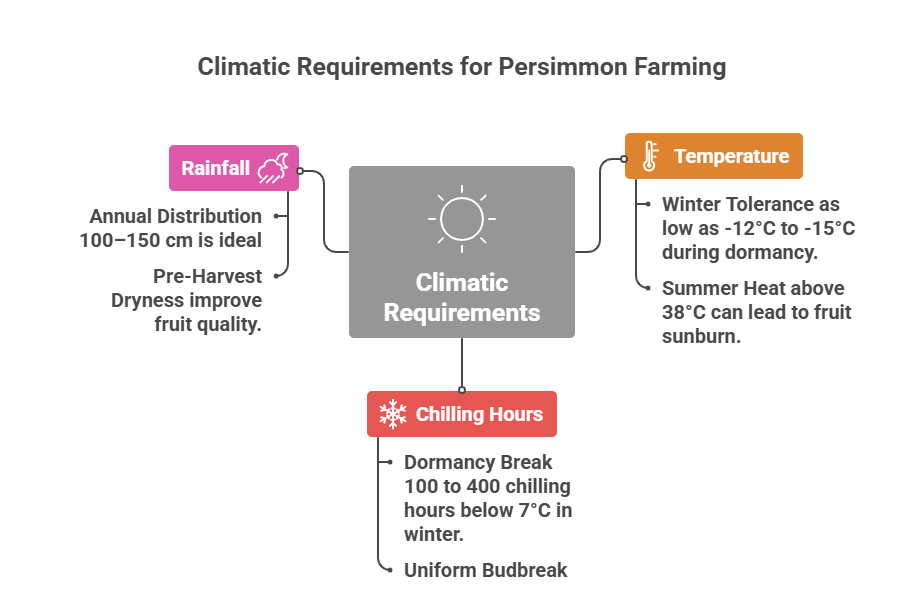
Major Cultivars
Cultivars are primarily categorized based on astringency.
| Category | Cultivar Name | Key Characteristics |
| Astringent (Hachiya Type) | Hachiya | Most common astringent type; large, heart-shaped, brilliant orange. |
| Saijo | Small, elongated, very sweet fruit; highly prized. | |
| Non-Astringent (Fuyu Type) | Fuyu (Jiro) | Most popular non-astringent type; squat, tomato-shaped, and sweet. |
| Jiro | Similar to Fuyu; widely grown. | |
| Suruga | Late-maturing, large, and very high quality. | |
| Pollination Variant (PVNA) | Tone Wase | Astringent type that becomes non-astringent only if seeds are formed (pollinated). |
Propagation
Persimmon propagation is primarily achieved through grafting or budding onto carefully chosen rootstocks to preserve varietal characteristics, promote earlier fruiting, and improve disease resistance. Seedlings of Diospyros kaki are most commonly used as rootstock, while Diospyros lotus is often selected for lighter soils because it induces slight dwarfing.
Whip or tongue grafting is generally carried out in late winter or early spring using dormant scion wood, whereas T-budding is typically performed in late summer when the bark can be easily separated.
Nursery Management
Effective nursery management in persimmon cultivation begins with the production of strong rootstocks. Seeds should be sourced from fully mature and healthy fruits to ensure vigorous plant growth. After harvesting, the seeds must be cleaned thoroughly to remove any remaining pulp and impurities. To enhance germination and break seed dormancy, they are subjected to cold stratification for approximately two to three months.
Following treatment, the seeds are sown in well-prepared nursery beds or containers containing fertile, loose, and well-draining soil. Once the seedlings grow to a pencil-like thickness of about 1–2 centimeters, grafting or budding is carried out using scion wood collected from high-performing, disease-free mother plants.
This process helps achieve uniformity, disease tolerance, and early bearing in the resulting plants. Proper nursery care is vital after grafting—regular irrigation, timely weeding, and effective pest and disease control must be maintained to promote healthy development.
Typically, the grafted plants are nurtured in the nursery for around one year and become suitable for transplanting when they reach a height of 1–1.5 meters, possess a robust root system, and have a well-healed graft union.
Planting
a). Planting Season
Planting is typically carried out from mid-February to early March, although it can also be done at the onset of the monsoon.
b). Planting Direction
Rows are typically oriented North-South to maximize sunlight exposure on both sides of the trees.
c). Spacing
| Planting System | Spacing | Specifications |
| Standard Spacing | 6m x 6m | Apply to most cultivars and rootstocks. |
| High-Density Planting | 4m x 4m or 5m x 5m | For less vigorous or dwarfing rootstocks. |
d). Pit Preparation
Pits of 1m x 1m x 1m are dug at least a month before planting. The topsoil is mixed with well-rotted farmyard manure (15-20 kg/pit) and single super phosphate (100-500g/pit). This mixture is used to refill the pits.
e). Planting Method
A small hole is made in the center of the prepared pit. The plant is placed carefully, ensuring the graft union remains 2-3 inches above the soil level. The soil is firmly pressed around the roots to eliminate air pockets. Immediate watering (staking) is essential.
f). Number of Plants per Acre
| Spacing | Number of Plants per Acre |
| 6m x 6m | ~112 |
| 5m x 5m | ~161 |
Intercropping
Intercropping can be practiced during the initial 3–4 years before the persimmon tree canopy closes, making efficient use of the space between rows. Suitable intercrops include legumes like beans and peas, as well as shallow-rooted vegetables or flowers that do not compete heavily for nutrients.
However, tall or nutrient-exhaustive crops such as maize or sugarcane should be avoided. Intercropping should be discontinued once the trees begin significant fruiting to prevent competition for resources.
Irrigation
Irrigation is an essential component of persimmon cultivation, particularly during the establishment phase and critical periods of growth. Young saplings should be watered every five to seven days to promote the development of a deep and healthy root system.
Mature, fruit-bearing trees require timely irrigation at specific stages such as bud break, flowering, fruit setting, fruit enlargement, and during prolonged dry conditions before harvest. Among various irrigation methods, drip systems are most efficient because they deliver water directly to the root zone while minimizing wastage.
However, basin or flood irrigation can also be practiced where suitable. It is important to regulate watering carefully, especially in heavy or poorly drained soils, to prevent waterlogging, root decay, and other moisture-related problems.
Fertilizer and Manure
Fertilizer management in persimmon cultivation should be based on soil test recommendations to ensure balanced nutrient supply. For mature trees that are five years old or older, nutrients are typically applied in two or three split doses—first at the time of bud break, followed by another after fruit set, and sometimes a third application after harvest to replenish soil fertility.
Fertilizers should be placed evenly in a circular band around the tree, slightly beyond the canopy’s drip line, and gently mixed into the soil to enhance absorption and minimize nutrient loss.
| Year After Planting | Organic Manure (FYM/Compost) | Biofertilizers (per plant) | Chemical Fertilizers (per plant) | Key Actions & Notes |
| Year of Planting | 10-15 kg mixed with soil | Azospirillum 50g, PSB 50g, Potash Mobilizer 50g (mixed with soil) | N/A | • Ensure manure is well-rotted. • Biofertilizers help in early root establishment. |
| Year 1 | 10-15 kg | Azospirillum 50g, PSB 50g, Potash Mobilizer 50g | • N: 125-200g • P₂O₅: 60-100g • K₂O: 125-200g | • Split chemical dose into two applications (Jun-Jul & Sep-Oct). • Apply in basin around the tree, lightly mix into soil, and irrigate. |
| Year 2 | 15-20 kg | Azospirillum 50g, PSB 50g, Potash Mobilizer 50g | • N: 250-400g • P₂O₅: 125-200g • K₂O: 250-400g | • Split chemical dose into two applications (Jun-Jul & Sep-Oct). • Increase the basin area as the tree’s canopy grows. |
| Year 3 | 20-25 kg | Azospirillum 50g, PSB 50g, Potash Mobilizer 50g | • N: 375-600g • P₂O₅: 190-300g • K₂O: 375-600g | • Tree may begin to bear a small crop. • Ensure adequate irrigation after fertilization. |
| Year 4 Onwards (Bearing Stage) | 20-25 kg | Azospirillum 50g, PSB 50g, Potash Mobilizer 50g | • N: 500-800g • P₂O₅: 250-400g • K₂O: 500-800g | • This is the standard maintenance schedule for a mature, bearing tree. • Apply chemical fertilizers in two splits: 2/3rd dose before flowering (Feb-Mar) and 1/3rd dose after fruit set (Jun-Jul). |
Weed Control
Weed management in persimmon orchards can be achieved effectively by integrating mulching, mechanical operations, and, when required, chemical control methods. A 4–6 inch layer of organic mulch—such as straw, dried leaves, or wood chips—applied around the base of each tree, but kept away from direct contact with the trunk, helps reduce weed emergence while retaining soil moisture.
Mechanical practices like shallow cultivation or hoeing between tree rows are also useful for maintaining orchard cleanliness. When weeds become difficult to control, the careful use of pre-emergent or post-emergent herbicides may be considered, ensuring all applications strictly follow label guidelines to avoid harm to the trees.
Inter culture operation
Training
The Modified Central Leader System is widely adopted for training persimmon trees, as it encourages the development of a strong framework and ensures long-term productivity. Under this system, one main trunk is maintained as the central axis, and three to four primary scaffold branches are selected at suitable intervals to extend in different directions.
This arrangement improves light distribution and air circulation within the canopy, resulting in a robust tree structure capable of supporting heavy fruit loads. Consequently, it minimizes the likelihood of branch breakage and contributes to more efficient orchard management.
Pruning
Pruning practices in persimmon cultivation depend on the tree’s stage of growth. During the early years, light pruning is performed to remove crossing shoots, water sprouts, and to shape the young tree properly. Once the trees enter the fruit-bearing phase, pruning is usually done in the dormant season to remove dead, diseased, or overcrowded branches, thereby improving air circulation and light distribution within the canopy.
As persimmons bear fruit on the current season’s shoots, moderate pruning is necessary each year to encourage new growth, ensure consistent fruiting, and maintain the overall productivity and quality of the yield.
Flowering and Fruit Management
Persimmon trees usually flower in late spring, producing blossoms on the current season’s shoots. Certain varieties are parthenocarpic, enabling them to develop fruit without the need for pollination. Effective fruit management is vital for maintaining tree health and achieving good yield quality, with fruit thinning being a key practice.
Thinning helps improve fruit size and uniformity while reducing the tendency for biennial bearing, where trees alternate between heavy and light crops. This operation is generally performed four to eight weeks after fruit set by removing undersized, deformed, or damaged fruits, leaving about one to three healthy fruits per shoot, spaced approximately 6–8 inches apart to allow proper growth and development.
Pest and Disease Management
Common Pests
a) Fruit Fly
Fruit flies are a major pest in persimmon orchards, causing direct damage to fruits and reducing marketable yield. To manage fruit flies, use bait sprays containing protein hydrolysate or methyl eugenol. Spray the bait at a rate of 0.8–1 litre per acre, ensuring coverage on the tree canopy.
Pheromone traps can also be installed at 4-6 traps per acre to monitor and reduce adult populations. Additionally, maintain orchard sanitation by regularly collecting and destroying fallen and infested fruits to interrupt the fruit fly lifecycle.
b) Mealybugs and Scale Insects
Mealybugs and scale insects feed on plant sap, causing yellowing, leaf drop, and weakening of the trees. These pests can be controlled effectively using horticultural oils such as neem oil at a concentration of 2% (20 ml per liter of water).
Alternatively, approved insecticides like Imidacloprid can be applied at a dose of 0.3 g per liter of water. Spray the solution thoroughly on the leaves, stems, and branches, particularly under the canopy where these pests often hide. Multiple applications at 10–15-day intervals may be necessary for heavy infestations.
c) Persimmon Borer
Persimmon borers are wood-boring insects that damage branches and trunks, which can weaken the tree and reduce fruit production. Management starts with good orchard hygiene: remove and destroy infested wood, prune dead or damaged branches, and avoid leaving cuttings in the field.
For chemical control, use systemic insecticides such as Chlorpyrifos at 2 ml per liter of water, applied as a drench around the base of the tree or sprayed on affected branches. Regular monitoring is essential to detect early infestation and prevent large-scale damage.
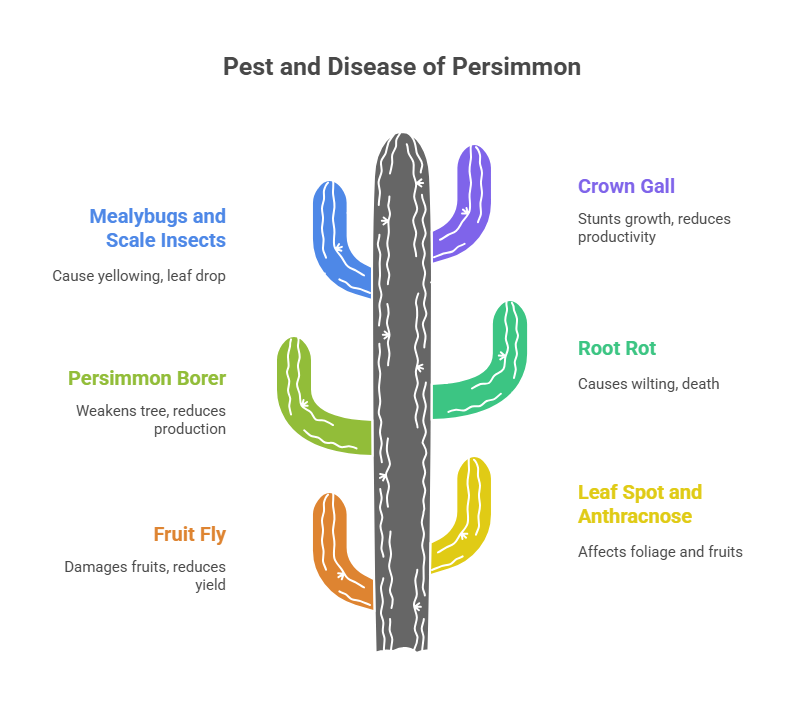
Common Diseases
a) Root Rot (Phytophthora)
Root rot, caused by Phytophthora species, is a serious soil-borne disease that affects persimmon trees, leading to wilting, yellowing of leaves, and eventual death if not managed. The first step in prevention is ensuring excellent soil drainage and avoiding waterlogging.
Over-irrigation should be strictly avoided, especially during the rainy season. For chemical control, fungicides like Metalaxyl 8% + Mancozeb 64% WP can be applied as a soil drench at 20–25 g per 10 liters of water per tree, particularly around the root zone during the onset of symptoms.
b) Leaf Spot and Anthracnose
Leaf spot and anthracnose are common fungal diseases that affect foliage and fruits, causing spots, defoliation, and reduced fruit quality. Management involves both cultural and chemical methods. Remove and destroy infected leaves and plant debris to reduce sources of inoculum.
Apply fungicides such as Mancozeb 75% WP at 20–25 g per 10 liters of water, or Copper Oxychloride 50% WP at 25 g per 10 liters of water. Spray the solution thoroughly on both leaf surfaces, stems, and young fruits at 10–15 day intervals, especially during humid and wet conditions.
c) Crown Gall
Crown gall is caused by Agrobacterium tumefaciens and leads to tumor-like growths on roots and the crown, which can stunt growth and reduce productivity. Prevention is the key, as chemical control is ineffective once the disease is established. Avoid injuring roots and the crown during cultivation, pruning, or transplanting.
Always use disease-free planting material and disinfect tools before use. If minor galls appear, prune affected areas and apply Bordeaux mixture (Copper Sulfate + Lime) 1% as a protective spray to prevent secondary infections.
Harvesting
Persimmon fruits are harvested once they attain full maturity, which is characterized by a deep orange skin color and a brownish calyx. Non-astringent cultivars can be picked while still firm, whereas astringent types should be harvested firm but fully mature and then allowed to ripen after picking.
A total soluble solids (TSS) level of around 16–18% Brix, measured with a refractometer, serves as a reliable indicator of proper maturity. Harvesting should be done carefully using secateurs, ensuring that the calyx and a short portion of the stem remain attached to minimize the risk of post-harvest decay. Gentle handling during harvest is crucial to avoid bruising and to preserve the overall fruit quality.
Yield
Persimmon yield varies depending on the cultivar, tree age, and management practices. Young trees aged 3–5 years typically produce 10–25 kg per tree, while mature trees of 8–10 years can yield 80–150 kg per tree. In a well-managed orchard with 112 trees per acre, full production can result in a total yield of 8 to 16 tons (8,000 to 16,000 kg) per acre.
Cost of Investment per Acre for Persimmon Farming
| S.N. | Categories | Cost (NRs.) |
| 1 | Land Preparation | 15,000 |
| 2 | Planting Material (112 seedlings) | 22,400 |
| 3 | Planting | 3,000 |
| 4 | Fertilizers & Manure | 16,800 |
| 5 | Irrigation (Drip Setup) | 100,000 |
| 6 | Weed Control (Pre & Post-emergence) | 5,000 |
| 7 | Pest & Disease Management | 7,000 |
| 8 | Harvesting | 4,000 |
| 9 | Miscellaneous Costs | 10,000 |
| Total Initial Cost | 183,200 |
Annual maintenance cost per acre for Persimmon Farming
The annual maintenance cost for persimmon farming from the second year onward is estimated to be around NRs. 75,000 per acre each year, covering routine expenses such as irrigation, fertilization, pest and disease management, pruning, and general orchard upkeep.
Income per acre for Persimmon Farming
| Year | Estimated Yield (kg/acre) | Market Price (NRs/kg) | Total Income (NRs) |
| 3rd Year | 400 | 80 | 32,000 |
| 4th Year | 1,500 | 80 | 120,000 |
| 5th Year | 3,225 | 80 | 258,000 |
| 6th – 10th Year (per year) | 6,125 | 90 | 551,250 |
| 11th – 20th Year (per year) | 8,600 | 90 | 774,000 |
| 21st – 30th Year (per year) | 6,250 | 100 | 625,000 |
Analysis of Persimmon Farming Profit Per Acre
| Year | Total Income | Total Costs | Annual Net Profit / (Loss) | Cumulative Net Profit / (Loss) |
| Year 0 | 0 | 183,200 | -183,200 | -183,200) |
| Year 1 | 0 | 75,000 | -75,000 | -258,200) |
| Year 2 | 0 | 75,000 | -75,000 | -333,200) |
| Year 3 | 32,000 | 75,000 | -43,000 | -376,200) |
| Year 4 | 120,000 | 75,000 | 45,000 | -331,200) |
| Year 5 | 258,000 | 75,000 | 183,000 | -148,200) |
| Year 6 | 551,250 | 75,000 | 476,250 | 328,050 |
| Year 7 | 551,250 | 75,000 | 476,250 | 804,300 |
| Year 8 | 551,250 | 75,000 | 476,250 | 1,280,550 |
| Year 9 | 551,250 | 75,000 | 476,250 | 1,756,800 |
| Year 10 | 551,250 | 75,000 | 476,250 | 2,233,050 |
| … (Years 11-20) | 774,000 (per year) | 75,000 | 699,000 (per year) | Accumulate rapidly |
| … (Years 21-30) | 625,000 (per year) | 75,000 | 550,000 (per year) |
Persimmon orchard establishment involves a high initial investment of NRs 183,200, mainly due to the cost of drip irrigation, and farmers should be prepared for negative cash flow during the early years, with cumulative losses crossing NRs 376,200 by the end of the 3rd year.
However, the payback period is reached by the 5th year, which is considered excellent for a perennial fruit crop, and once the orchard is established, profitability rises sharply. From the 6th to 10th year, the annual net profit stabilizes at around NRs 476,250, increasing further to NRs 699,000 during the peak production years between the 11th and 20th year, and even in the later years (21st to 30th year), profits remain attractive at NRs 550,000 annually.
Despite the initial financial burden, the long-term return on investment is highly rewarding, generating over NRs 2.23 million in net profit by the 10th year alone and several million rupees over a 30-year lifespan, making persimmon farming a highly lucrative option for patient and well-capitalized farmers.
Sources
Food and Agriculture Organization (FAO)
University of California Agriculture & Natural Resources (UC ANR)
European Plant Protection Organization (EPPO)
Punjab Agricultural University (PAU)
Tamil Nadu Agriculture University (TNAU) – Agritech portal
Indian Council of Agricultural Research (ICAR)
Nepal Agricultural Research Council (NARC)
U.S. Department of Agriculture (USDA).
Ministry of Agriculture and Livestock Development (Nepal)
Disclaimer: This crop farming profits assume optimal conditions. Actual results may vary depending on climate, market prices, and farm management practices.
